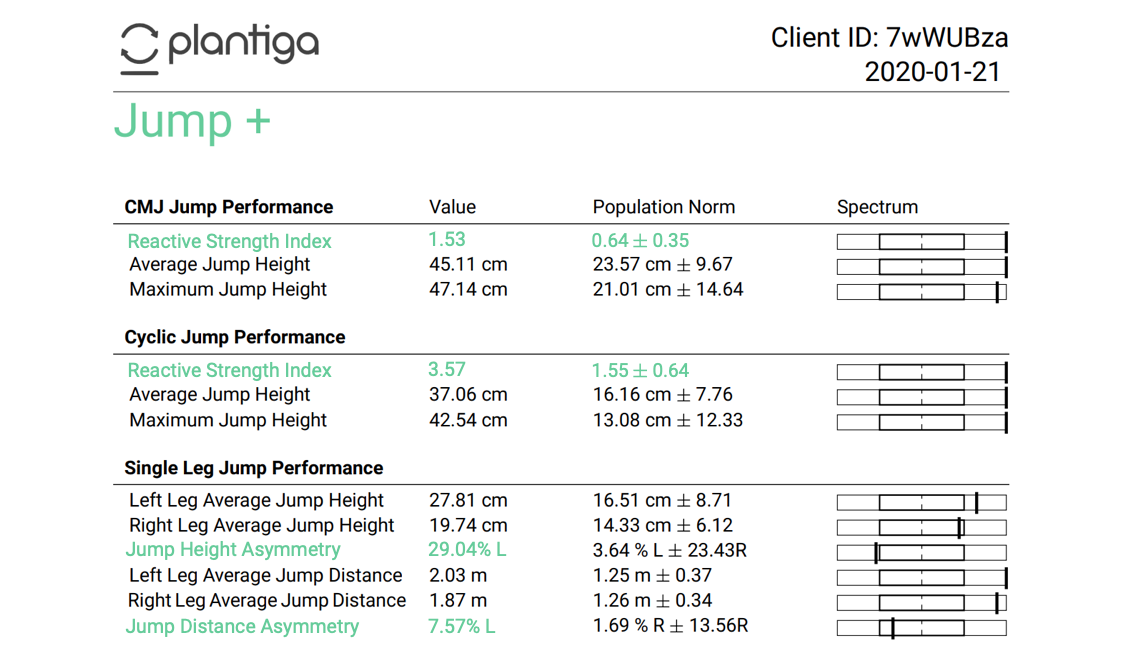Lenny is a male high school rugby and track & field athlete with right anterior knee pain and bipartite patella and is working with his physiotherapist to help his patella track properly. He is using Plantiga insoles to track his progress, augment classical physiotherapy tests, and return to pre-injury strength and performance levels. This case study highlights the shortcomings of relying on singular tests to assess functional strength deficiencies.

- Clinical Test (Mock Isokinetic Dynamometer) - Lenny’s results when testing max number of reps on a leg flexion and extension machine at 60 °/s showed 9% asymmetry for extension and 12% asymmetry for flexion. His results indicate that he is within acceptable bounds for RTP.
|
Extension |
Flexion |
||||
|
Weight |
Left leg reps |
Right leg reps |
Weight |
Left leg reps |
Right leg reps |
|
70 lb |
20 |
20 |
60 lb |
25 |
22 |
|
20 |
24 |
25 |
22 |
||
|
20 |
20 |
23 |
20 |
||
|
Average |
20 |
22 |
Average |
24 |
21 |
|
Asymmetry |
9% |
Asymmetry |
12% |
||
- Consecutive Countermovement Jump Tests
- RSI - Lenny’s RSI for consecutive countermovement jumps is 1.53, which is about 2.5 standard deviations above average. Since he is an elite athlete with a focus on speed, it is not surprising that his RSI is significantly above average.
- Cyclic Jump Tests
- RSI - Lenny’s RSI for cyclic jumps is 3.57, which is about 3 standard deviations above average. While his RSI for both CCMJ and cyclic jumps were high compared to the average, he seems to be stronger in the cyclic jump than the CCMJ. This reflects either a stronger, more explosive ankle complex or a weaker, less explosive knee complex.
- Single Leg Jump Tests
- Jump Height and Distance Asymmetry - Lenny’s jump height asymmetry is 29.04% L, almost four times higher than his jump distance asymmetry of 7.57% L. Single leg jumps for height primarily use the quadriceps, while single leg jumps for distance use the glutei and calves, so Lenny shows a functional quad deficiency in his left leg.
Summary:
Based only on the clinical isokinetic dynamometer test, Lenny would be almost ready to return to play. However, by also evaluating his RSI with two different jump strategies and his single leg jump asymmetries, it is clear than Lenny has quadriceps deficiencies that need to be addressed. A jump height asymmetry of almost 30% does not qualify him for safe RTP, despite the dynamometer showing only a 9% discrepancy. Lenny seems to have some functional deficiencies that were only discoverable with functional assessments, like dual and single leg jumping.
.png?height=120&name=Plantiga%20lockup%20black%20(1).png)